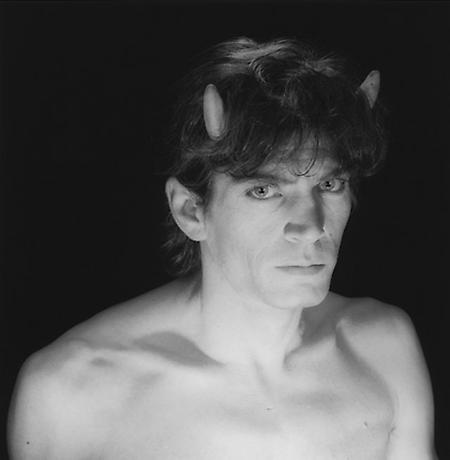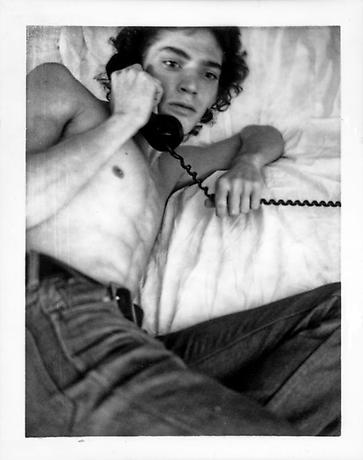Robert Mapplethorpe
His self-portrait caught my attention at first sight. Unlike other photographers, whose self-portraits looked obviously shot by themselves, Mr. Mapplethorpe’s self-portraits didn’t look like “selfies” to me. Whether he looked at the camera or not in the photos, the expression through his eyes was so strong, vivid, yet natural at the same time, as if there was another photographer shooting for him.

Self Portrait, 1985
When being a photographer for too long, sometimes I feel shy to stand in from of the camera and be the subject in the photo. However, it was not a problem for Mr. Mapplethorpe. He managed to capture the expression of people as well as express himself in his photography. That’s really impressive and admirable to me.
Image source: The Robert Mapplethorpe Foundation
Francesca Woodman

Polka Dots, 1976
Francesca Woodman’s self-portraits were extreme to me. I felt she was afraid of the camera or the thing behind it through her eyes. However, she tried so hard to convey her anger, fear, and desperate through the photos. She looked like a captured prisoner who already lost her mind. To amuse herself in the prison, she started to act outrageously.

Untitled, 1977–1978
The atmosphere around her self-portraits was heavy. I almost felt suffocated when browsing through her pieces. Again, what caught my attention was still that her pieces didn’t look like “selfies”. But this time, I think it was because she felt so depressed that she ignore the camera and everything around her.
Image source: Artnet


Recent Comments